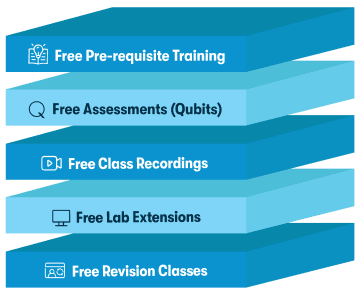Unable to find what you're searching for?
We're here to help you find itEC-Council Disaster Recovery Professional v3 (EDRP) Course Overview
The EC-Council Disaster Recovery Professional (EDRP) v3 course provides a comprehensive approach to prepare learners for planning, implementing, and managing the various aspects of disaster recovery and business continuity. Aimed at professionals in the IT and risk management industries, the EDRP equips individuals with the knowledge and skills to develop policies and procedures, understand Risk assessment, conduct Business impact analysis, and design effective recovery strategies.
Throughout the course, participants will delve into modules covering topics such as the fundamentals of disaster recovery and business continuity, Risk assessment, Business impact analysis, Continuity planning, and the disaster recovery planning process. They will also learn about Data backup and recovery strategies, Virtualization-based recovery, System recovery, centralized and decentralized System recovery, and the crucial elements of BCP testing, maintenance, and training.
By completing the EC-Council Disaster Recovery Professional course, learners will be well-prepared to create and manage robust disaster recovery and business continuity plans, ensuring organizational resilience in the face of unexpected disruptions.
Successfully delivered 55 sessions for over 69 professionals
Purchase This Course
USD
View Fees Breakdown
| Course Fee | 3,850 |
|
Total Fees (with exam) |
3,850 (USD) |
USD
View Fees Breakdown
| Course Fee | 2,950 |
|
Total Fees (with exam) |
2,950 (USD) |
USD
View Fees Breakdown
| Flexi Video | 16,449 |
| Official E-coursebook | |
| Exam Voucher (optional) | |
| Hands-On-Labs2 | 4,159 |
| + GST 18% | 4,259 |
|
Total Fees (without exam & Labs) |
22,359 (INR) |
|
Total Fees (with Labs) |
28,359 (INR) |
Select Time
Select Date
| Day | Time |
|---|---|
|
to
|
to |
♱ Excluding VAT/GST
You can request classroom training in any city on any date by Requesting More Information
Inclusions in Koenig's Learning Stack may vary as per policies of OEMs


Scroll to view more course dates
♱ Excluding VAT/GST
You can request classroom training in any city on any date by Requesting More Information
Inclusions in Koenig's Learning Stack may vary as per policies of OEMs
Suggestion submitted successfully.
Koenig Learning Stack
Inclusions in Koenig's Learning Stack may vary as per policies of OEMs

